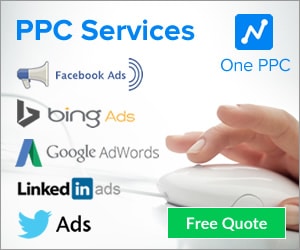It’s no secret that Google Ads can be expensive. However, there are ways to reduce these costs while also increasing leads or sales. For example, not all advertisers pay the same cost per click (CPC) because Google takes into account the relevancy of ads alongside the maximum bid per click when CPC is calculated.
If you’ve ever researched PPC advertising, or you’ve run a Google Ads campaign in the past, you may have come across Quality Score. Quality Score is an essential consideration for those aiming to get the best out of Google Ads, but what is it, and how do you go about improving your score? Here is a useful guide to Quality Score to increase the efficacy of your Google Ads strategy.
Table of Contents
- What is Quality Score?
- The following factors affect your Quality Score:
- Why is Quality Score important?
- Benefits of Improving Google Quality Score
- How is Quality Score calculated?
- Improving Expected CTR
- Tips to Improve CTR
- Improving ad relevance
- Improving the landing page experience
- Beyond the Basics
- Has Your Quality Score Tanked?
What is Quality Score?
Google’s Quality Score is a rating of the quality and relevance of both your keywords and PPC ads. It’s used to determine your cost per click (CPC) and multiplied by your maximum bid determines your ad rank in the ad auction process. Quality Score is designed to show you how your ad quality ranks in comparison to other advertisers. It’s given on a scale from 1-10, with 10 being the highest, and it’s reported for every keyword.
A high-Quality Score means that when someone searches for your keyword, your ad and landing page are more relevant and useful than other advertiser ads. You can use Quality Score as suggestions for areas like ads, landing pages or keywords selections that need improvement.
Google determines your Quality Score based on the relevancy and quality of your ads, landing pages, and keywords. You can observe your Quality Score by clicking on the ‘keyword analysis’ tab in your account. Ignorance of your score could be leading to a loss of valuable leads or customers, so it’s always beneficial to check where you are standing and see what areas require improvement.
Your Quality Score depends on multiple factors, including:
- There are several things that affect your click-through rate (CTR) including
- – The relevance of each keyword to its ad group
- – Landing page quality and relevance
- – The relevancy of your ad text
- – Your historical Google Ads account performance
There are three main Quality Score components, with click-through rate being the most crucial. Despite Google never releasing how much each individual component “weighs” in the Quality Score algorithm, we do know that a higher click-through rate is indicative of your ads being both relevant and useful to users.
Therefore, Google provides rewards such as:
- Higher ad rankings
- Lower costs
The following factors affect your Quality Score:
What is the likelihood that someone will click on your ad when Google serves it for a particular keyword they type in? This metric is called Click-Through Rate (CTR).
CTR (Clickthrough Rate) is a ratio showing how often people who see your ad end up clicking it. CTR can be used to gauge how well your keywords and ads are performing.
Another thing to take into consideration is how relevant your ad appears in relation to what somebody has searched. For example, if somebody searches for one of your products or services, having this keyword within the ad copy is relevant to the searcher. (Ad relevance).
The user’s experience on your landing page is important—you don’t want to run an ad only for the person clicking it to be taken to a page with useless information or ads that are lying. If you consider these things, then you can enhance your Quality Score if essential by examining which keywords aren’t doing well in comparison to others. (Landing Page Relevance).
Why is Quality Score important?
Your Quality Score is comparable to your credit score when you’re trying to take out a loan–the higher the quality score, the more likely you are to be approved for a loan with good terms. In Google Ads, a high-Quality Score enables two key benefits: improved ranking position for advertisements and lower cost.
By working on your Quality Control Score, you will most likely see an improvement in your CTR. This could lead to more money being brought in and improved results from your marketing campaign. When somebody clicks on one of your ads, you want them to do something with that click- taking the next step. A low cost per conversion rate is a good sign that people are doing this.
Benefits of Improving Google Quality Score
By optimising your Quality Scores, you will be able to get a higher ROI because higher Quality Scores mean lower cost per conversion! Cost per conversion is different from the more common metric of cost per click. Instead of focusing on how much each click costs, this number tells you how much it costs when someone takes the desired action– whether that’s signing up for a free trial or buying a product. Quality Scores have a direct impact on your company’s costs; the higher the Quality Score, the lower both your cost per click and cost per conversion will be.
How is Quality Score calculated?
Quality Score is based on hundreds of indicators, but these are the three primary components:
- The likelihood that your ad will be clicked when shown (Expected click-through rate or CTR)
- How closely related your ad is to what the user searched for (Ad relevance)
- How relevant and useful people find your landing page after clicking your ad (Landing page experience).
Google’s algorithm compares each element to others that have popped up for the same keyword over the past 90 days, then rate it as ‘Above average’, ‘Average’, or ‘Below average’.
If any of these components has a rating of ‘Average’ or below, this signals that there may be room for improvement. Google calculates a Quality Score every time someone does a search that triggers your ad. To calculate this Quality Score, we look at various factors related to your account. By improving the following elements, you can help improve your Quality Score:
- Your keyword’s expected click-through rate (CTR) is based on the keyword’s past CTR and how often that keyword led to clicks on your ad.
- The Display URL’s past CTR is also taken into account, as well as the overall CTR of all the ads and keywords in your account.
- Furthermore, the quality of your landing page will be considered – including factors such as relevancy, transparency, and ease of navigation. Finally, both keyword/ad relevance and keyword/search relevancy will be analyzed
- Your account’s success in the region/s you’re targeting
- How well your ad is doing on this and similar sites (if Display Network is part of your target)
- The performance of your ads on different types of devices. For example, QS would be different for desktops/laptops versus mobile devices or tablets.
How to improve your Quality Score
Quality Score can be increased by making your ad more relevant to what the customer is searching for, optimising your landing page, and improving your geographical and device performance. In other words, as an advertiser, you must more accurately target your customer’s requirements.
To improve your quality score, focus your attention and resources on the areas of your account that are already performing well. This will increase important metrics such as your CTR, average session duration (landing page experience), and conversion rate. Make sure that your best-performing keywords and campaigns have the highest bids and budget respectively. On the other hand, use bid or budget reductions to cut down on ad spend in areas of lower performance.
In addition to the Quality Score available for each keyword in your Google Ads account, there are other factors at play. Most of the time, you’re unable to solve a Quality Score issue with just the keyword-level QS visible in the interface. This guide will help you understand the different types of Google Quality Score, why they’re important, and the misconceptions about Quality Score, and it will provide you with a checklist of actions you can take to raise your Quality Score.
There are three ways you can individually and together improve your Quality Score, as Google has a specific algorithm to calculate keywords’ Quality Scores. Keep in mind that this might necessitate changes to your keywords, ads, or website. To demonstrate how this works, let’s look at each factor:
Having a high-Quality Score offers plenty of advantages, the main one being a lower click charge. If you have an excellent score of 9 or 10, Google could charge you up to 50% less than someone with an average rating. Also, if your score is below 5, you’re more likely to encounter increased charges. The perks of having a good score are evident, but how can ensure you get- and stay at- the top?
Tips to Increase Quality Score
- By categorizing your keywords into themes like products or services, you can make sure that your ads are high quality and relevant.
- Ads that are relevant to the keywords being searched will result in better engagement with your target audience.
- Keep your landing pages in good condition. They should be optimised for both mobile and desktop use, contain relevant keywords, titles and tags, and look smooth and easy to use. You don’t want individuals clicking on your links only to leave immediately because they’re unimpressed with what they see; that would result in wasted money.
- Your landing pages should be visually appealing and easy to navigate. For example, if someone clicks on an ad with the intention of buying a product, they should be able to add it to their shopping cart within seconds from the landing page. Make sure your directions are clear and concise and include a CTA on every page.
- By using negative keywords, you’re able to get rid of traffic that isn’t relevant. This is beneficial because you don’t want to spend money on clicks that won’t convert.
Google Ads are a great way to promote your business, but in order for them to be effective, you need a high-Quality Score. This score lets you know if your ads are relevant and of good quality. If the score is low, it means that there is something wrong with either the keywords or the ad itself. In order to increase your Quality Score, make sure to do keyword research and optimize your landing pages. By making these changes, you’re more likely to see an increase in sales conversions.
Quality Score Deep Dive
If you want to know where your website needs improvement, look into Quality Score’s three factors:
- Expected click-through rate: How often people will click on your ad.
- Ad relevance: Whether or not your ad is relevant to a user’s search.
- Landing page experience: How useful and interesting people find your landing page.
These metrics will help you decide whether to alter your ad text, keyword selection or landing page content. You’ll see a status of ‘Below average’, ‘Average’ and ‘Above average’ for each component so that you know which areas require more attention.
The takeaway is this: Give your users what they desire and quality performance will follow suit. Keep your long-term goals in mind and look for ways to achieve them by enhancing your user experience– Quality Score can act as a valuable guide in this process.
Improving Expected CTR
The expected CTR (click-through rate) is an estimate of the probability that someone will click on your ad when it appears for a chosen keyword. Keep in mind that this assumption only takes into account that the search term matches your preferred keyword exactly, and doesn’t consider any other outside factors, like what type of device they’re using or other real-time auction factors. When you examine your keywords’ status, you will see one out of three possible statuses for their expected CTR.
If your keyword has an “Average” or “Above Average” click-through rate relative to all other keywords on Google Ads, then there are no significant problems. If the keyword has a “Below Average” click-through rate, consider changing the ad text to be more similar to that of your top-rated keywords.
For “below average” status keywords, consider editing the ad text to include the actual keywords.
Having multiple ads per ad group allows you to be more strategic with your keyword usage, which in turn raises your click-through rate. Also, if you analyze your keywords and find some that are commonly searched but don’t connect to what you’re selling, it might be advantageous to either remove those keywords. This process is called a keyword diagnosis.
Tips to Improve CTR
- If you want people to click on your ad, follow these tips:
- Make your offer more attractive to your target audience.
- Check that the details in your ad match the keywords you’re targeting.
- Highlight a unique benefit of what you’re selling, like free shipping.
- Try out various calls to action on your landing page until you find one that resonates with your audience. some examples of effective calls to action are ‘Buy, Sell, Order, Browse, Find, Sign up, Try,’ and ‘Get a Quote.’ The more specific you are in your ad text, the better.
Sometimes a more specific ad will have lower CTRs but higher conversion rates. It all depends on your goals. For example, if you sell luxury dress shoes, adding a phrase like ‘free bow tie with order’ may attract shoppers looking for deals. On the other hand, phrases like ‘fine craftsmanship’ or ‘custom Italian design’ may engage people looking for better quality brands. Ultimately, it is important to strike a balance in order to achieve the best possible performance. A low-cost message might draw in more clicks initially, but could hurt your business down the road by not building customer loyalty.
Improving ad relevance
Ad relevance, much like expected CTR, is based on how well a keyword relates to the message found in your ads. You will see one of three possible statuses for this category: average, above average or below average. Relevance is important to consider because it improves Quality Score.
Improving the landing page experience
Not only is it important to drive traffic to your website, but you must also give visitors a great experience while they are on your site.
If your Landing page experience is ‘Below average’ or ‘Average’, follow these best practices:
- Give people what they’re looking for by choosing the most relevant landing page.
- Consistency is key when moving a potential customer from your ad to your landing page. Make sure that what’s promised in the ad is delivered on the landing page. Even if you can’t make changes to your site, experiment to find pages that are most likely to get conversions.
- Use conversion rate as a way to measure how successful your landing page is. A user-friendly and mobile-responsive website is key to keeping users on your page, so make sure to test yours using the mobile-friendly test.
- The speed of your page directly impacts whether someone will stay on your site or leave. If you want people to stick around, make sure your pages load quickly.
It’s not essential for the EXACT word-for-word phrase from a searcher’s query to be present on your landing page. Instead, focus more intently on creating excellent up-levelled experiences that satisfy what the user is seeking. Quality Score can be enhanced when you compare your keywords against the copywriting, or words, contained on your designated touchdown spot as well as how easy it is to manoeuvre and understand the information found there(the overall user experience).
How useful is your landing page to people who click the ad? Is it well-organised? Does the page have text that relates to a person’s search terms? Is the page clear in its directions? Make sure to provide clear direction with helpful information, related links, a clear view of a shopping basket (if applicable) and easy-to-see contact information.
Grouping your keywords into Themes
Ads and keywords are placed into ad groups. By having several ad groups, your keywords can be divided into categories that are more relevant than if you had just one or two ad groups.
If you want to write more relevant ad text that is aligned with your high-quality landing pages, start by dividing your keywords into small and concise groups. Quality Score optimization is then a matter of chose related keywords for your ads and lading pages as well as making sure those landing pages are actually helpful to potential customers.
Make ads more relevant to keywords
If your Ad relevance is ‘Below average’ or simply ‘Average,’ follow these best practices: Use keyword-rich language in your ad text to closely match user search terms.
- Look for ad groups with numerous keywords that can’t be easily addressed by the same ads. Split these groups into multiple, smaller advertisement groupings that better align with what users are searching
- Categorize your keywords into themes to increase relevance. These themes could be based on products, services or other topics. For example, if you sell rings, have a set of keywords for ‘engagement rings’ and another group devoted to ‘wedding bands’.
Interpret alongside other metrics
By looking at other metrics in your account such as click-through rate, conversion rate and site engagement, you can get an idea of where you need to focus your professional development efforts. All of these numbers affect your performance to some degree and can help you understand which areas could use improvement.
Use Quality Score to improve your high-performing keywords, and use low-Quality Scores to identify areas of improvement for your ads, click-through rate, and landing page experience.
Beyond the Basics
Account-Level Quality Score
Account-level Quality Score is based on the historical performance of all keywords and ads in an account. Google doesn’t confirm this Quality Score exists, but it’s accepted that there are different levels of Quality Score than the visible keyword-level Quality Score. If you have a large number of low QS keywords and low click-through rate (CTR) ads with poor historical performance in your account, they will drag down your total Quality Score, making it harder to introduce new keywords, as they’ll start out at lower overall Quality Scores.
Most people have divergent takes on what to do with low Quality Score keywords. Some would say delete them as soon as it’s clear they’re not going to work well, while others think you should just pause them. The truth is, either approach could be viable for poor-quality keywords because eventually, over time, they will stop collecting data and won’t matter as much to your account-level score when you either un-pause or delete them.
Ad Group Quality Score
Ad group quality score is not visible within an account on the ‘Ad Groups’ tab but rather an average of the keyword quality scores in that specific ad group. You should look for ways to restructure your campaigns and ad groups and edit low-CTR ads to boost ad group QS. Restructuring your ad groups is a good way to improve your account structure. Your visible history is erased when you move things around, but the history for calculating your Quality Score is preserved.
Keyword-Level Quality Score
Google issues a Quality Score to your keywords, which is visible in the Google Ads interface. This score ranges from 1-10, with 1 being poor and 10 being great. The keyword-level performance of search queries that exactly match your keyword will determine this quality score; therefore, it will be the same for any given keyword, regardless of match type.
Please note that a keyword’s QS is based on their performance history on Google.com until they accrue a large number of impressions in your account (a high amount, multiple thousands). We call this the impression threshold. Once the keyword reaches this threshold, its QS will start to depend more on how it performs in your account than its past performances.
If you have a lot of keywords in your account that receive very few impressions, it’s important to know that these keywords will not be evaluated based on their own journeys within the account. There’s little that can impact their Quality Score until they reach an impression threshold. By reviewing keyword Quality Scores in your account, you’ll be able to see:
- Quality Score – How relevant the keyword, ads and landing pages are to those viewing an ad.
- Ad Relevance – How closely related keywords are to ad copy.
- Landing page experience – How useful the landing page is to users viewing the page.
- Expected CTR – Based on past performance, the chances that an ad will be clicked when shown.
- Quality Score (historic) – The last known quality score in the reporting time frame.
- Ad Relevance (historic) – The last known ad relevance in the reporting time frame.
- Landing page Experience (historic) – The last known landing page experience score in the reporting time frame.
- Expected CTR (historic) – The last known expected click-through-rate in the reporting time frame.
Here are some recommendations to boost impressions: For new accounts, to get the best results, start by targeting ad groups or keywords with the highest click-through rates (CTR).
Analyze impression share data. Your ads’ impression share is the percentage of times your ad appears in comparison to when it is eligible to appear. If you want to improve performance, consider increasing your daily budget or upping your bids for a higher position.
If a keyword for your campaign has gotten several impressions but the CTR is low, this might mean that users don’t find the ad relevant to what they were looking up. In this case, you can make your ads more specific to the theme of your ad group.
Ad-Level Quality Score
Different ads within your ad groups will have various click-through rates, which is one element that determines Quality Score. If you have several ads with low CTRs in your ad groups, they could be dragging down your Quality Scores since Google Ads looks at all of your account’s ads when calculating scores. You can give your account a natural CTR bump by including Dynamic Keyword Insertion (DKI)ads for Search Network campaigns.
With Dynamic Keyword Insertion, or DKI, ads, the user’s search query appears in the ad–provided it does not go beyond the maximum number of characters for an ad. Even though you have to take care when using these ads, a DKI ad is more likely to get clicked on than a non-DKI one because it looks like it relates more closely to what the user searched.
A good Quality Score is needed if you want AdWords to display extensions with your ads. The first position might not always be the most lucrative spot, but it’s required if you want to take advantage of site links and improve your click-through rate. Google has started testing adding the domain name in the first line of an ad, although only ads in the top position are eligible.
Landing Page Quality Score
Google cites three primary factors for a high-quality landing page: relevant and original content, transparency, and navigability. By creating websites that Google users will find useful and pertinent, advertisers make it easier for Google to remain the top search engine. Following principles for an effective landing page should be essential not just for google, but also the advertiser in order to increase conversion rates and ROI .
Although Google does not explicitly state that there is such thing as a Landing Page Quality Score (we’ve only come across this term in old help centre files of Google help articles), landing page quality is still a determining factor in your keyword’s Quality Score. In addition to following Google’s guidelines, remember that real people are evaluating your pages more than once. Consequently, there is always potential for improvement. In particular, having excellent usability and a fast load time is key.
Display Network Quality Score
The Quality Score on the Google Display Network varies a bit from that of the Search Network. Instead of taking into account your ad’s historical performance and similar sites, Google Ads will only consider your ad’s landing page quality and keyword relevance to sites you’re eligible for.
Depending on which bidding option you select for your Display Network campaign, the Factors affecting Quality Score will be different. If CPM is being utilized, then quality is based solely on the landing page. However, if CPC is chosen as the bid model, both historical CTR and landing page quality are taken into account.
Display Quality Score can be enhanced by testing diverse ad types. For example, you might realize that image ads perform better on some websites than responsive ads. Its beneficial to have multiple options and run various tests so your CTR will rise.
The Display Network is quite different from the Search Network, so make sure you’re using the right tools to target your ads to the appropriate sites and demographics. Additionally, we strongly suggest that you create separate campaigns for your Search Network and Display Network Management.
Reviewing your relative click-through rate is another strategy to increase your GDN Quality Score. By evaluating this metric, you can understand how well your ads are performing when compared to other ads on the same websites. Google Ads has an optional column that Campaign and Ad Group tabs can use for this purpose.
To calculate your Relative CTR, simply divide your GDN campaign’s CTR by the CTR of the other ads running in similar spaces. A low relative To improve your GDN Quality Score, start with potential exclusions, site and category exclusions, revamping ads to include negative keywords, and utilizing contextual targeting.
Device Quality Score
For mobile devices, Google states that Quality Score is calculated in the same manner as it would be for a computer; however, system factors in the distance between user and business location when determining mobile ad quality score by utilizing device location and extensions data.
Although Quality Scores are calculated the same for advertisements on mobile devices with full browsers and computers, your ad will have a different QS for its mobile and desktop counterparts.
After you split your combined campaign into separate campaigns for each platform, you’ll be able to see the Quality Score for each one.
Has Your Quality Score Tanked?
The following are some things that can lead to a lower Quality Score. Be sure to go through this list when you’re trying to improve your Quality Score:
Make sure to examine your destination URLs. After you make changes to your landing pages, check that the URL’s have not broken any of the links. You can find a list of symbols and their replacements below:
- Forward slashes (/) and backward slashes (\): replace with blank space or dash
- Commas: replace with blank space or dash
- Apostrophes: omit
- Parentheses: omit
- Ampersands: replace with blank space or dash.
- Low load time is the regional average plus three seconds, which can negatively affect your Quality Score.
- Here are several ways you can improve your website’s speed and performance:
- Read about factors that contribute to a slow load time.
- Check out Google’s page speed Chrome & Firefox extension.
- Rewrite low click-through rate ads. Google considers a low CTR to be <1.5%.
- Ensure that you have at least 3 extended text ads in every ad group. -Consider incorporating Dynamic Keyword Insertion (DKI) ads to boost CTR.-Conduct an account audit and restructure where needed . -Consider pausing keywords with a CTR < 1 . 5 % with few or no conversions
- Split your ad groups into smaller, more closely themed ones.
- Ensure that the landing page for each ad group is highly relevant to its content.
- Consider adding broad match keywords if you have none. When you add new keywords to your account, they are given a baseline Quality Score based on the account’s history; however, a new keyword only starts showing a Quality Score that is uniquely it’s own once it reaches the impression threshold.
Therefore, if you’re only running with the phrase and/or exact match, consider adding in the broad match to help the keywords reach the impression threshold so they can begin accruing their own unique Quality Score.
Summary
If you’re thinking of trying Google Ads, or you’re hoping to revive a campaign that has so far failed to set your order books alight, take these tips on board and focus on increasing your score. If you have high-quality ads that are relevant to your brand and your products, you’ll save money at the same time as increasing sales. s










